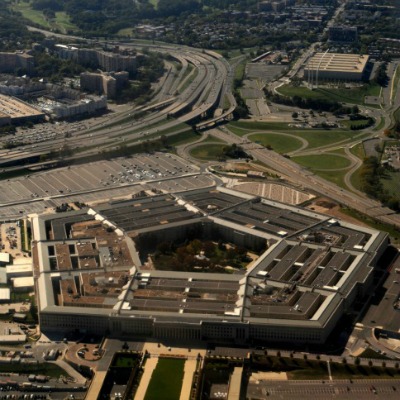 Ever since the earliest turbines were installed in California in the 1980s, the U.S. Department of Defense (DOD) has had an unfavorable view of wind energy, as wind turbines interfered with radar systems. However, thanks to new technology and a recently announced collaboration, the DOD is set to become a major player in renewable energy procurement, including wind projects.
Ever since the earliest turbines were installed in California in the 1980s, the U.S. Department of Defense (DOD) has had an unfavorable view of wind energy, as wind turbines interfered with radar systems. However, thanks to new technology and a recently announced collaboration, the DOD is set to become a major player in renewable energy procurement, including wind projects.
Based on a memorandum of understanding (MOU) signed this week by Secretary of Defense Leon Panetta and U.S. Department of the Interior (DOI) Secretary Ken Salazar, the DOD will play a significant role in encouraging wind, offshore wind, solar, geothermal and biomass energy resources on or near DOD installations.
According to the agencies, the MOU establishes a plan for how the two departments will work together to deploy renewable energy, and details each department's responsibilities.
The MOU allows the DOD to explore ways in which renewable energy could be provided directly to a single installation or be transmitted across a network of DOD installations, according to a press release issued by the DOI. Some larger projects could sell their excess power to the grid, as long as appropriate measures are in place to ensure military-base security, the DOI adds.
Changing winds
The DOD's involvement in the MOU deviates from its historic stance on utility-scale wind power. Many of the department's concerns stem from how wind turbines interact with radar systems, as operating wind turbines can be indistinguishable from airplanes on many radar systems and can cause blackout zones in which planes disappear from the radar entirely.
However, the DOD says it now has a process to review instances where renewable energy projects could impact military operations or readiness.
Thanks, in part, to that new system, each of the military branches has committed to deploying 1 GW of renewable energy on or near its installations by 2025. In fact, the U.S. Army's Central Contracting Command just released its highly anticipated $7 billion request for proposals (RFP) for renewable energy generation.
The RFP calls for wind, solar, geothermal and biomass energy generation through 30-year power purchase agreements (PPAs).
The Army's attempts to procure renewable energy got off to a rocky start last February, when the service first released its draft RFP for wind energy.
Some wind and solar developers – as well as lenders – expressed concerns about certain aspects of risk allocation, such as in cases of national security, or even the process by which a lender could take possession of a distressed project. Because the PPAs would be financed according to nonrecourse financing, it is paramount that banks and lending institutions approve of them, according to industry experts.
‘A lender is going to want an easement or access to the renewable energy facility,’ says Chris Diaz, principal at Bellaire Bluffs, Fla.-based Seminole Financial Services. ‘If there's an issue with a base closure, for example, the lender's only recourse may be to come and get the project, unless the U.S. Army agrees to honor the 30-year PPA as long as the system is producing power.’
In fact, the Army's draft RFP drew nearly 800 comments, according to James W. Campbell, spokesperson for the U.S. Army's Engineering and Support Center. The comments generally fell into three categories: bankability of the PPA, scope of the PPA and power pricing.
Further complicating matters is that most wind and solar developers do not track military procurements. Therefore, the Army's requirements likely created some confusion among civilian respondents.
Anntonette Alberti, vice president at Saratoga, N.Y.-based Tetra Tech, says that although financial lenders were underrepresented at the beginning of the process, the Army has made efforts to incorporate feedback from lenders.
‘As long as the Department of Army is relying upon project developers to arrange nonrecourse financing to provide the capital to build the renewable energy projects contemplated by the Huntsville PPA procurement, the lending community has a powerful role in determining the ultimate success of the Army's plans," Alberti says.
However, Campbell maintains that despite its rocky start, the draft RFP served its purpose.
‘The Army sought comments to get an idea of how the DOD can better work with the wind industry,’ he says. ‘That was the entire purpose of the draft RFP.’



